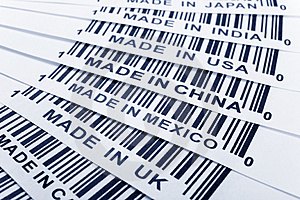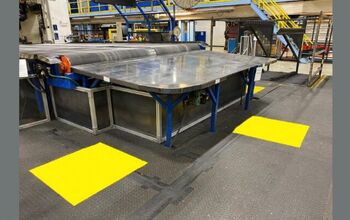Trade War Watch 3: U.S. Tire Prices to Rise 20-30%
Our man Bertel Schmitt sees President Obama’s decision to place a 35 percent import tax on Chinese-made tires as counterproductive political pandering. Unless the Prez decides to please his friends in The United Steel Workers (ex-employer of the current chief of the Presidential Task Force on Automobiles, Ron Bloom) by slapping a tax ALL imported tires,
production of said rubber will simply shift to another low-wage country. As the Wall Street Journal points out, US tire sizes mean that could take a while. The WSJ counts the cost to consumers.
The tariffs, which apply to all Chinese tires, will cut off much of the flow of the more than 46 million Chinese tires that came to the U.S. last year, nearly 17% of all tires sold in the country . . .
“I think within the next 60 days you’ll see some pretty significant price increases,” said Jim Mayfield, president of Del-Nat Tire Corp. of Memphis, Tenn., a large importer and distributor of Chinese tires. He estimates prices for “entry-level” tires could increase 20% to 30%.
Demand meets diminished supply. Which also means . . .
There could also be shortages, Mr. Mayfield said, as existing supplies run low and importers have trouble finding alternative sources. Many importers stopped placing orders for Chinese tires several weeks ago, fearing they might end up ordering tires that would carry a hefty tariff by the time they arrived in U.S. ports.
And speaking of unintended consequences, the domestic tire industry Mr. Obama seeks to protect is not prepared to handle that demand, should the President decide that a national debate over America’s industrial and trade policy should supplant/augment the debate over health care and cap and trade. Hang on, isn’t Bloom the new head of Industrial Policy? Anyway, like I said, you can’t fix stupid.
Meanwhile, a massive reduction in capacity is taking place. In 2005, North America had the capacity to produce 370 million tires. Today, that number has been cut by more than 40 million — and a further 35 million are in the process of being eliminated.
The chance of that trend being reversed by this tariff are what, exactly?
Update: China is now moving towards imposing tariffs on chicken and auto parts imported from the US. It’s a little tough to imagine much of a market for American chicken and auto parts in China, given the population of Chinese chicken and the wide array of auto parts produced there, not to mention that America buys $4.46 worth of Chinese stuff for every $1 worth of American stuff bought by the Chinese. Nevertheless, $800M worth of American-made auto equipment and $376M worth of starred-and-striped chicken meat went to China between January and July of 2009, during which time China sent America $1.3B worth of tires.
More by Robert Farago
Latest Car Reviews
Read moreLatest Product Reviews
Read moreRecent Comments
- MacTassos Bagpipes. And loud ones at that.Bagpipes for back up warning sounds.Bagpipes for horns.Bagpipes for yellow light warning alert and louder bagpipes for red light warnings.Bagpipes for drowsy driver alerts.Bagpipes for using your phone while driving.Bagpipes for following too close.Bagpipes for drifting out of your lane.Bagpipes for turning without signaling.Bagpipes for warning your lights are off when driving at night.Bagpipes for not coming to a complete stop at a stop sign.Bagpipes for seat belts not buckled.Bagpipes for leaving the iron on when going on vacation. I’ll ne’er make that mistake agin’.
- TheEndlessEnigma I would mandate the elimination of all autonomous driving tech in automobiles. And specifically for GM....sorry....gm....I would mandate On Star be offered as an option only.Not quite the question you asked but.....you asked.
- MaintenanceCosts There's not a lot of meat to this (or to an argument in the opposite direction) without some data comparing the respective frequency of "good" activations that prevent a collision and false alarms. The studies I see show between 25% and 40% reduction in rear-end crashes where AEB is installed, so we have one side of that equation, but there doesn't seem to be much if any data out there on the frequency of false activations, especially false activations that cause a collision.
- Zerocred Automatic emergency braking scared the hell out of me. I was coming up on a line of stopped cars that the Jeep (Grand Cherokee) thought was too fast and it blared out an incredibly loud warbling sound while applying the brakes. I had the car under control and wasn’t in danger of hitting anything. It was one of those ‘wtf just happened’ moments.I like adaptive cruise control, the backup camera and the warning about approaching emergency vehicles. I’m ambivalent about rear cross traffic alert and all the different tones if it thinks I’m too close to anything. I turned off lane keep assist, auto start-stop, emergency backup stop. The Jeep also has automatic parking (parallel and back in), which I’ve never used.
- MaintenanceCosts Mandatory speed limiters.Flame away - I'm well aware this is the most unpopular opinion on the internet - but the overwhelming majority of the driving population has not proven itself even close to capable of managing unlimited vehicles, and it's time to start dealing with it.Three important mitigations have to be in place:(1) They give 10 mph grace on non-limited-access roads and 15-20 on limited-access roads. The goal is not exact compliance but stopping extreme speeding.(2) They work entirely locally, except for downloading speed limit data for large map segments (too large to identify with any precision where the driver is). Neither location nor speed data is ever uploaded.(3) They don't enforce on private property, only on public roadways. Race your track cars to your heart's content.



































Comments
Join the conversation
I have a set of Kumho Solus HP4s and they have on the sidewall, "MADE IN CHINA". Any questions? And they are all four egg-shaped and crowned. The Honda Accord drives completely differently after a rotation. I have to adjust to it every time I do it. NEVER a Kumho again, whether they make them at home or not. Terrible tires.
@ geeber But it’s virtually impossible to do that... And it would be worthless to try. It's called diminished returns. Model confidence improves rapidly to a point.